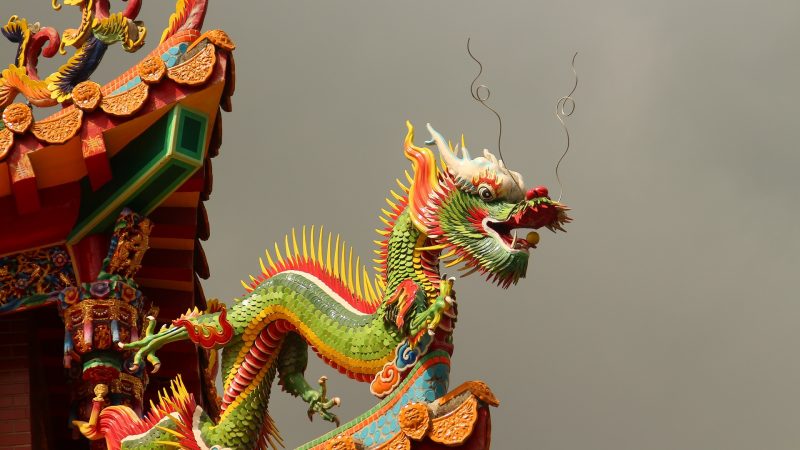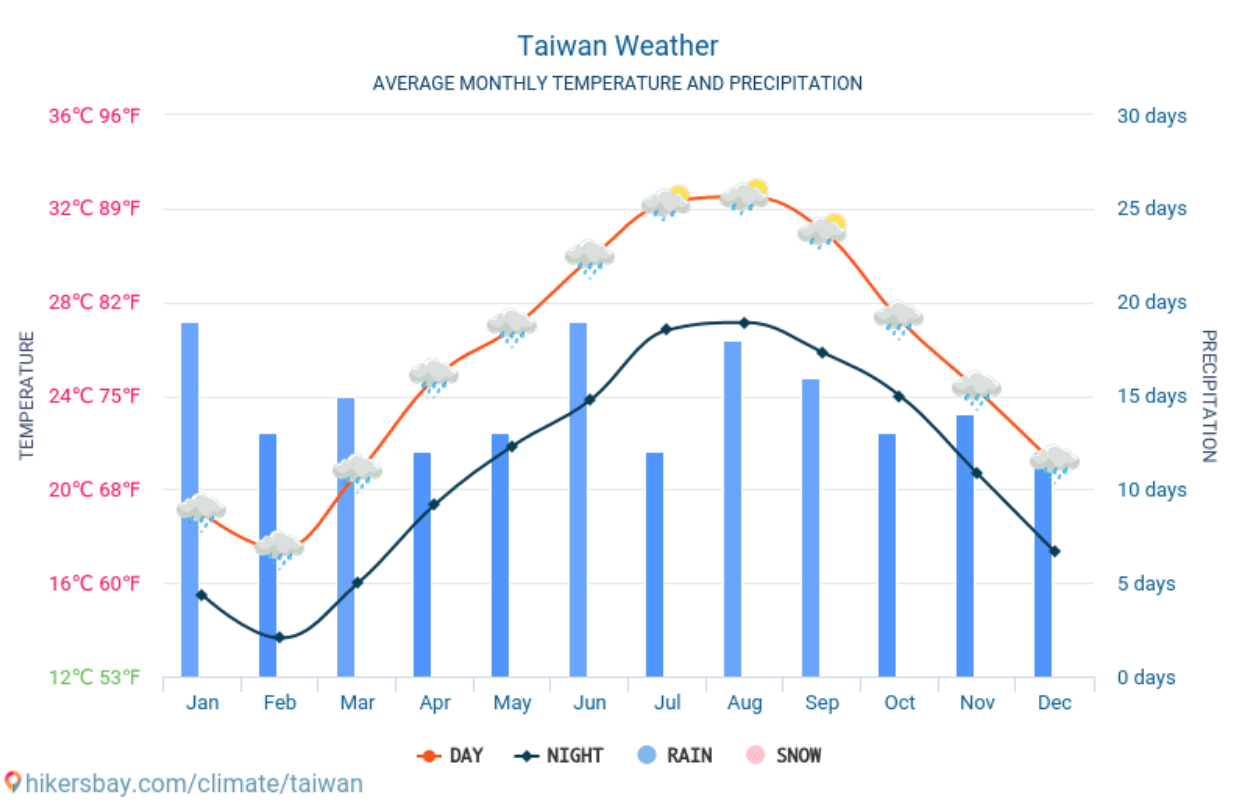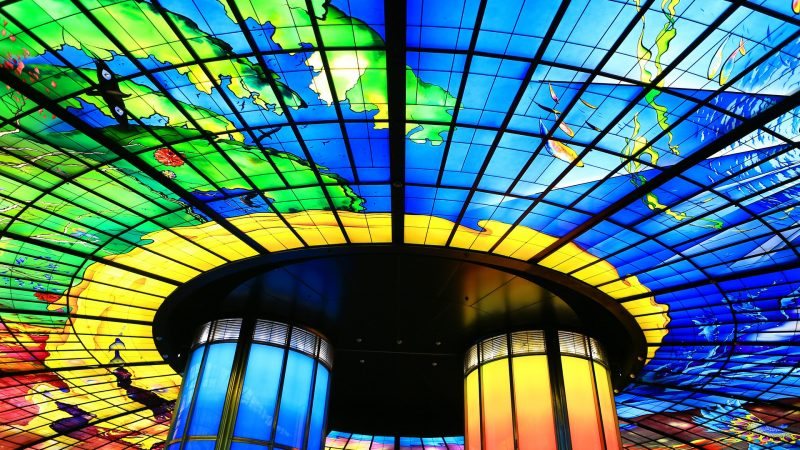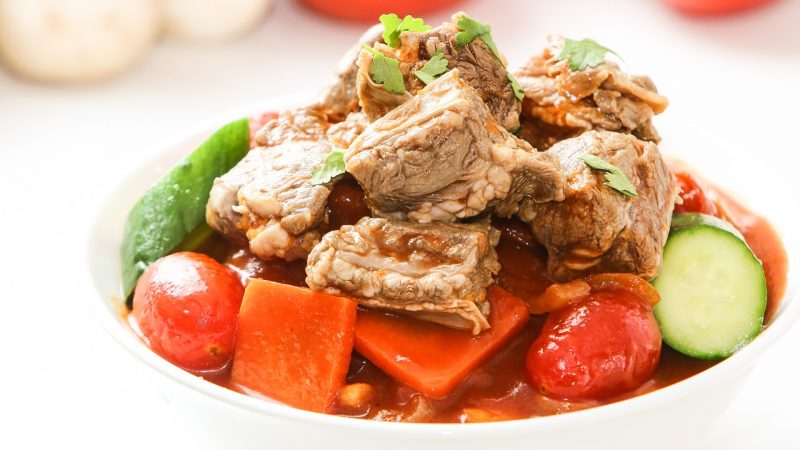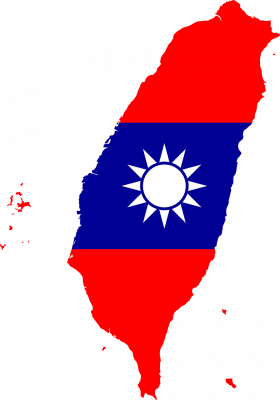Contents
Overview:
Taiwan, officially the Republic of China (ROC), is a large island with a total area of 35,980 square km situated in East Asia. Its capital is Taipei and the largest city in New Taipei.
Taiwan has a number of national languages including Mandarin, Formosan languages, Taiwanese Hokkien and Hakka. Roughly 84% of Taiwan's population descends from Han Chinese who migrated from Qing China between 1661 and 1895 and about 14% of the population migrated from mainland China in the 20th century.
In Taiwan, there are 14 recognized aboriginal tribes. Together they make up 1.8% of the country's population. The official currency is the New Taiwan dollar (NT$) (TWD).
With 23.5 million inhabitants, Taiwan is among the most densely populated states because Mountains cover approximately two-thirds of the surface of the island. You can drive around the whole island in roughly eight hours.
Taiwan has evolved to become a high-income generating country with a skilled and educated workforce. Most people in Taiwan are Buddhist or Taoist and there are also people adhering to other religions.
History of ROC:
Taiwanese indigenous peoples inhabited the island for thousands of years before the 17th century when Dutch rule opened the island to mass Han immigration.The island was conquered in 1683 by the Qing dynasty of China and fell to the Empire of Japan in 1895 after at the end of the First Sino-Japanese War.
Following the surrender of Japan in 1945, the Republic of China (ROC), took control of Taiwan on behalf of the World War II Allies.
In 1949, Chinese communist soldiers defeated Nationalist forces on the China mainland and established the People’s Republic of China there. The Nationalist government and armies from the mainland fled to Taiwan, starting the separation of Taiwan from China.
In the following years, the ROC claimed jurisdiction over the Chinese mainland as well as Taiwan, although in the early 1990s Taiwan’s government dropped this claim to China. Currently, the effective jurisdiction of the ROC government is limited to Taiwan and several small islands.
During the 1960s, Taiwan saw a period of rapid economic growth and industrialization called the “Taiwan Miracle”.
In the 1980s and early 1990s, the ROC changed from a one-party military dictatorship to a multi-party democracy with a semi-presidential system. The first presidential election was held in 1996.
The PRC supports a version of the One-China policy, which states that Taiwan and mainland China are both parts of China and that the PRC is the only legitimate government of China. So it has consistently claimed sovereignty over Taiwan and refused diplomatic relations with any country that recognizes the ROC.
Taiwan currently has official ties with only 16 United Nations member states. However, most major powers maintain unofficial ties with Taiwan through representative offices and institutions that function as de facto embassies and consulates.
In Taiwan, the major political division is between parties favoring promoting a Chinese identity and a future Chinese unification contrasted with those promoting Taiwanese identity and aspiring to independence. It is interesting that both sides have moderated their positions to broaden their appeal to the common citizens.
In a recent survey on the emergence of Taiwanese identity, 63.5% of respondents identified themselves exclusively as Taiwanese, 34% identified themselves as both Taiwanese and Chinese and only 2.6% identified themselves as Chinese.
On 17 May 2019, Taiwan's parliament approved a bill legalizing same-sex marriage, making it the first country in Asia to recognize marriage equality for all its citizens.
Weather:
Taiwan sits on the Tropic of Cancer and its climate is tropical. Summers are usually hot and humid, lasting from April/May to September/October. The rainy season falls in May and June and the average rainfall is 2,600 millimeters (100 inches) per year. Northern areas of Taiwan is typically several degrees cooler than the south.
Airport:
Its Major airports include Taiwan Taoyuan, Kaohsiung, Taipei Songshan, and Taichung. There are currently seven airlines in Taiwan, the largest ones being China Airlines and EVA Air.
Taiwan has four international seaports: Hualien, Keelung, Kaohsiung and Taichung.
Most international visitors will arrive through Taiwan Taoyuan International Airport (TPE) which is located about 40 km (25 mi) west of Taipei in Dayuan District, Taoyuan. In 2016, the airport handled a record 42.3 million passengers and 2.1 billion kgs of freight, making it the 10th busiest airport worldwide. The same year, it was ranked the best airport for its size in the Asia-Pacific region.
Taiwan Taoyuan International Airport currently has two terminals, which are connected by short shuttle trains. The Airport MRT (train) Links both terminals at the airport to Taipei and Zhongli District, Taoyuan City. The trains have Free Wi-Fi and wireless charging services. Passengers flying certain airlines can utilize downtown check-in and luggage facilities at Taipei Main Station.
Airport Links:
- Express train: 38-minute link between the airport and downtown Taipei. Stops at both airport terminals, Chang Gung Memorial Hospital, New Taipei Industrial Park, and Taipei Main Station.
- Commuter train: 45-minute link between the airport and downtown Taipei. Stops at all 21 stations on the line.
Customs:
Each person (over 20), may bring in an alcoholic beverage (1,000cc or less without limitation on the number of bottles), plus 200 cigarettes, or 25 cigars or 1 pound of tobacco.
Medicines carried with passengers must be declared. Prescription drugs, if no prescription (or a supporting document), are allowed to be brought in with the amount of up to 2 months use.
Currency:
(Check today’s rate)
- 1 US Dollar = 31.5 TWD (Taiwan New Dollar)
- 1 Euro = 35.15 TWD (Taiwan New Dollar)
- 1 Hong Kong Dollar (HKD) = 4.02 TWD (Taiwan New Dollar)
- 1 TWD = 2.2 Indian Rupees (INR)
- 1 TWD = 1.7 PH Peso (PHP)
- 1 TWD = 1.01 Thai Baht (THB)
Banknotes are issued in NT$100, NT$ 200, NT$500, NT$1000, and NT$2000. Coins come in denominations of NT$50, NT$10, NT$5, and NT$1.
The currency exchange service in Taiwan is strictly regulated, so you can only exchange money at banks or authorized businesses. In the absence of independent money changers on the streets, Local banks are the ones that offer the best exchange rates in the market. Besides the banks, most malls and department stores offer currency exchange services.
Bring your passport or valid ID since it is required for a money exchange transaction.
You can also withdraw local currency at ATMs which gives the best exchange rate. Just check with your bank first about the overseas transaction charges.
Communication:
Taiwan offers free Wi-Fi on a mass scale to its citizens and to foreign visitors. You have to register first and then you will have access to the Wi-Fi in public spaces such as shopping areas, hospitals and libraries. Check here for more info.
In Taiwan the power plugs and sockets are of type A and B. The standard voltage is 110 V and the standard frequency is 60 Hz.
Check your devices whether they work in the range of 110-220 V and don’t forget to bring at least one travel adapter.
SIM card:
SIM cards are cheap and easily accessible in Taiwan. They can be purchased in city shops, at the airport, or in advance online with a pickup at the airport. Check all available options before deciding on a data plan. More info here.
Consider renting a personal mobile pocket WiFi unit with unlimited 4G LTE data for up to 5 users for only NT$100 per day, with easy pickup and drop-off at Taoyuan Airport (TPE) Terminals 1 and 2.
You can buy one EASYCARD for your transportation in Taipei whether it is bus or metro. These standard fare cards cost NT$100 each (about $3), exclusive of a deposit and balance.
The airport has 24-hour convenience stores in the basement levels where you can purchase Easycard or pick it up from the information desk, or at the ticket machine. You can also buy them at convenience stores (7-Eleven, FamilyMart, Hi-Life, OK Mart), at Taipei/Taoyuan/Kaohsiung Metro station among other places.
These cards, pre-loaded with cash, can also be used for a number of activities, like shopping, venue ticket, tourist attractions etc. For more information: click here.
EasyCard can be returned for a refund at the Information Counter of any Taipei Metro station or a EasyCard Corporation's service center. The full value of the NT$100 deposit will be refunded minus a handling charge of NT$20 after confirmation that there are no claims against the deposit.
How To Get Around in Taipei:
Taiwanese people love to cycle and it is getting more and more popular every day. The country has a lot of bicycle lease stations and riding a bike is a good way to see the cities.
You can use the Easy Card to rent or pay NT$2,000 as a deposit. The cost is NT$10 every 30 minutes for the first 4 hours, NT$20 every 30 minutes for 4-8 hours, and NT$40 every 30 minutes after 8 hours.
Taiwan’s taxis have a bright yellow box with a ‘Taxi’ sign on the roof. As most drivers do not speak English it is advisable to ask someone who knows Mandarin to write down your destination down to show to the driver.
Single fare surcharges apply after 11pm. Uber is almost half cheaper than regular taxis.
City Bus
One of the cheapest ways to explore the cities of Taiwan is via public buses and some services run 24 hours a day.
There are over 300 bus routes in the Taipei city. Shihlin, Chunghsiao East Road, and Jhonghua Road are all important transfer places. Bus stoppages can be found near almost each metro station so you can get close to your destination in public transport. A one-section journey costs NT$15.
Be sure to ring the bell before getting off and wave to the driver to get on as the buses may not stop at every stop,
Metro – Mass Rapid Transport (MRT)
The MRT Metro network operates in Taipei and Kaohsiung from 6 Am till Midnight. Metro is the quickest and the most convenient way to explore these cities.The Metro fares are based on zones are cheap. You can get a 20% discount using Easy Card within Taipei. A single trip costs NT$20-65 based on the distance and a One-Day Pass is NT $150 | 24hr Taipei Metro Pass NT $180 | 48hr Taipei Metro Pass NT$280.
Download the metro map from here.
The MRT is clean, safe and reliable, the signs are in English. You can select English on the ticket machines and the nearby attractions are well signposted.
Long-Distance Bus
The largest Bus center in Taipei is the Central Bus Station, located to the north of Railway Station. An underground tunnel connects the bus station and the railway station so you can continue your journey. The bus destinations include Kaohsiung, Tainan, Chiayi, Hualien, Taichung, which depart every hour. The bus to Chiayi costs about NT$250 with a duration of 4.5 hours, to Tainan takes 5 hours and NT$350.
Train
The Taipei Railway Station is the largest railway station in the city where Taiwan Rail Line and Taiwan High-Speed Rail (THSR) meet. This is your starting point to go to any other cities of Taiwan through Taiwan Rail Line such as Yilan, Hualien, Taitung and Pingtung. The Taiwan High-Speed Rail (THSR) only passes the western cities like Taoyuan, Hsinchu, Taichung, Tainan, and Kaohsiung.
Examples of schedule and ticket price ( NT$) to major destinations in Taiwan:
| To | By Taiwan Rail Line | By Taiwan High Speed Rail | ||
| Travel Time | Ticket Price | Travel Time | Ticket Price for
Standard Seat (NT$) |
|
| Taoyuan | 30m | 51-66 | 20min | 160 |
| Taichung | 2h15m | 289-375 | 1h | 700 |
| Tainan | 4.5-6h | 569-738 | 1.5-2h | 1,350 |
| Kaohsiung | 5-7h | 650-843 | 2h | 1,490 |
| Taitung | 3.5-7h | 604-929 | — | — |
The station has four underground floors.
- B1 – Ticket Hall
- B2 – Metro Rail
- B3 – Railway Platform
- B4 – Metro Rail

Fan-made plushies exhibition at 2015 Taiwan Ponycon in National Taiwan Normal University.. Image via Wikipedia. CC BY_SA 3.0
What To Buy:
- Mini sky lanterns
- Taiwanese (Oolong) tea
- A-po Iron Egg
- Pineapple Cakes
- Dried Fruits
- Wood sculptures at Sanyi Shuei Mei Wood Sculpture Street
- Taiwan ceramics at Yingge Ceramics Street
- Mochi (rice ball dessert)
- Plum wine
- Sun cakes/biscuits
12 things to bring back from Taiwan (Food)
What to Eat:
Street food in Taiwan is generally safe and delicious, and many tourists flock to dine at night markets. In most areas of Taiwan, Tap water is safe for drinking only after boiling. Water or ice served in restaurants are usually filtered. If you aren't sure, you should buy bottled water.
Stinky tofu, a popular street food, is a Taiwanese form of fermented tofu that has a strong, pungent odor. The stink is very strong and can be smelled from 300 meters distance.
Must eats in Taiwan:
- Beef Noodle Soup (Niu Rou Mian 牛肉麵)
- Scallion and Daikon (Radish) Pancake.
- Authentic Taiwanese Breakfast.
- Taiwanese Spicy Hot Pot.
- Pork Pepper Bun (Hu Jiao Bing 胡椒餅)
- Braised Pork Rice (Lu Rou Fan 滷肉飯)
- Taiwanese Fried Chicken.
- Bubble Tea / Pearl Milk Tea.
Filtered, mineral and bottled drinking water are available at most retail shops.
Travel:
According to Travel Safe Abroad, Taiwan is relatively safe to visit and petty crime rates are low. However, there is a chance for pickpocketing and bag-snatching, especially in locations frequented by tourists. So be vigilant. Many women find Taiwan safe, especially at night.
If in Taipei itself taking bus and train is easy enough. Check a GVer's Guide to Taipei, Taiwan for more.
Things You Should Know
- The Taiwanese consider it rude to say “no.” Instead they may say, “eh, maybe.
- In Taiwan, the number 4 is considered unlucky. Buildings such as hospitals and hotels don't have a 4th floor.
- In Taiwan, white (instead of black) symbolizes death and is used at funerals. At weddings, red is a popular color because it symbolizes good luck.
What to see:
- The Eluanbi Lighthouse (1882) is one of the most well-known attractions in Taiwan. Dubbed the “Light of East Asia,” it is the brightest lighthouse in Taiwan.
- Taiwan’s most popular food market is the Shilin night market in Taipei.
- The highest mountain in Taiwan is Yu Shan (or Jade Mountain) in Yu Shan National Park.
- The Formosan black bear is the largest land animal in Taiwan and is a symbol of the country.
- There are Cat Cafés in Taiwan where people can pay hourly to play with cats and have drinks.
- There’s a special village in Taiwan popular to tourists which features semi-domesticated cats.
- The Prunus mei, or plum blossom, is Taiwan's national flower. Because it flowers in the winter, it symbolizes Taiwanese perseverance and courage.
- With over 150 hot springs, Taiwan has the world's second-highest concentration of hot springs, after Japan. The popular and easily reachable hot springs are located in Beitou.
- Shimen Cave, located in Shimen District on the very northern point of Taiwan, is a natural rock arch formation caused by sea erosion.
- Taroko Gorge, sometimes called the Taiwanese Grand Canyon, is the country's premier scenic attraction, which is carved by the Liwu River. It is located in Hualien, eastern Taiwan.
- The Lion’s Head Mountain is located about 80km south west of Taipei. This area has many temples and monasteries and is a popular tourist destination.
- Yehliu is a cape on the north coast of Taiwan, an hour drive away from Taipei. It’s known for Yehliu Geopark, which has outstanding natural formations like a landscape of honeycomb and mushroom rocks eroded by the sea.
- Jiufen is a picturesque village located in a mountain in northeastern Taiwan, east of Taipei. It's known for the narrow alleyways of its old town, packed with teahouses, street-food shacks and souvenir shops and it is a perfect spot for taking stunning photos and enjoying the misty sea views.
Tickets in Taipei:
Combined Ticket: NTD $400
National Palace Museum and Shung Ye Museum of Formosan Aborigines: Regular admission
National Palace Museum and Miramar Entertainment Park Ferris Wheel: Regular admission
Combined Ticket: NTD $820
- The National Palace Museum
- Taipei 101 Observatory
(Source)
Other Facts:
- Portuguese sailors named Taiwan Ilha Formosa (“beautiful island”) in the Sixteenth century
- The colours of the flag are symbolic of the three principles of the people of Taiwan – making China free, prosperous, and powerful. These principles were developed by Sun Yat Sen, the father for the nation as regarded by both China and Taiwan. The blue color stands for nationalism and liberty. The red color stands for livelihood and togetherness. The white color stands for democracy and equality.
- Taiwanese people have an average life expectancy of 80.4 years.
- Taiwan has 22.7% agricultural lands.
- The GDP per capita (PPP) is $50,500
- Exports $349.8 billion per annum and Imports $269 billion per annum
- IDD – +886 , Internet country code .tw and people drive on rights side.
- Taiwan is one of the most earthquake-prone places in the world because it is located in the Ring of Fire. The country experiences over 1,000 perceivable earthquakes a year and over 17,000 non-perceivable quakes.
- T'ai-nan is the oldest city in Taiwan (Est. 1590).
- Taiwan loves Karaoke (or KTV as it is locally known). It is one of the most popular activities in Taiwan.
- Instant noodles and bubble tea were invented in Taiwan.
- In Taiwan, those who were born between 1980 and 1991 are called the “Strawberry Generation,” which is a disparaging way to describe them as soft, lazy, and “easily bruised.”
- The most popular surname in Taiwan is Chen, at around 12% of the population.
- Usually, any store receipt in Taiwan is a ticket for a government lottery with top prizes to win over 300,000 USD.
- The garbage trucks in Taiwan usually play music to notify citizens of their arrival and the citizens bring the garbage out themselves to the truck.





